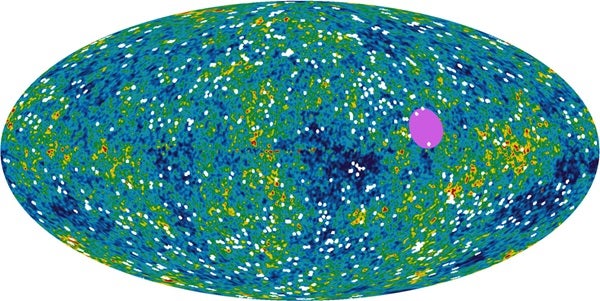Q: Have astronomers learned more about the “dark flow”? Is it real?
A: When photons scatter off electrons moving toward us, the photons gain energy; when photons scatter off electrons moving away from us, they lose energy. This effect is called the kinematic Sunyaev-Zeldovich (kSZ) effect.
In 2008, Alexander Kashlinsky and his collaborators claimed the detection of a “dark flow” after analyzing this kSZ effect in the cosmic microwave background (CMB), the residual radiation throughout the universe due to the Big Bang. Using data from the Wilkinson Microwave Anisotropy Probe (WMAP), they measured the temperature of the CMB and the positions of clusters of galaxies; the researchers inferred that large regions of the nearby universe were moving coherently. These large related velocities, dubbed a dark flow, posed a significant challenge to standard cosmology theory that the universe looks the same everywhere on large scales. Many cosmologists doubted these claims and identified concerns in the analysis.
Last year, the team associated with the Planck CMB probe analyzed its data and looked for this bulk flow. With higher spatial resolution and sensitivity than WMAP, the Planck instruments are much more responsive to these dark flows. Using the same cluster sample and more sensitive CMB data, they did not detect the flow and found that if it does exist but is hidden in the data, its velocity is less than 158 miles/second (254 km/s), several times below what Kashlinsky’s team claimed.
Although the dark flow probably isn’t real, cosmologists have used the kSZ effect to detect galaxy motions on large scales. While a Princeton University undergraduate student, Nick Hand led a group of scientists who used data from the Sloan Digital Sky Survey and the Atacama Cosmology Telescope to study galaxy cluster motions. The amplitude of the signal that they detected is much smaller than that claimed by Kashlinsky and colleagues and is consistent with the standard cosmological model.
While the dark flow has “disappeared,” the kSZ effect will likely remain an important tool for tracing the evolution of the universe and inferring the nature of dark energy — the mysterious “something” that’s speeding up cosmic expansion.










